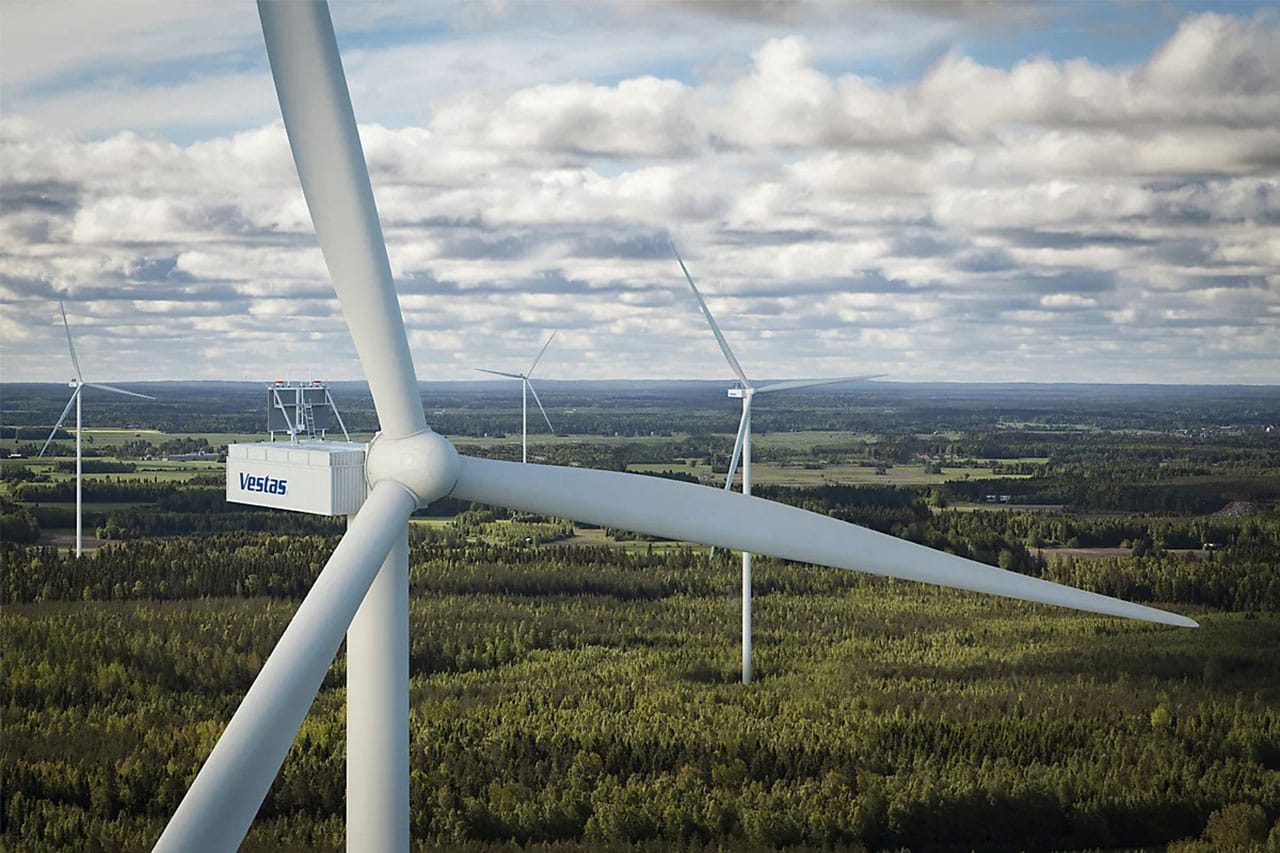
Wind power is carbon-free, and about 85% of turbine components, including steel, copper wire, electronics, and gearing, can be recycled and reused. However, wind turbine blades at the end of their operational life often end up in a landfill.
Now, wind turbine maker Vestas has presented a new solution that renders epoxy-based turbine blades as circular without the need for changing the design or composition of blade material. The Danish company says it has figured out how to recycle all wind turbine blades – even ones already sitting in landfills.
Turbine blades have previously been challenging to recycle due to the chemical properties of epoxy resin, a resilient substance that was believed to be impossible to break down into reusable components. This has led to many technology leaders attempting to replace or modify epoxy resin with alternatives that can be more easily treated.
Vestas’ solution is enabled by a novel chemical process that can chemically break down epoxy resin into virgin-grade materials. The chemical process was developed in collaboration with Aarhus University, Danish Technological Institute, and Olin, the partners of the CETEC project, a coalition of industry and academia established to investigate circular technology for turbine blades.
“Until now, the wind industry has believed that turbine blade material calls for a new approach to design and manufacture to be either recyclable or, beyond this, circular, at the end of life. Going forward, we can now view old epoxy-based blades as a source of raw material,” says Lisa Ekstrand, Vice President and Head of Sustainability at Vestas. “Once this new technology is implemented at scale, legacy blade material currently sitting in a landfill, as well as blade material in active wind farms, can be disassembled and reused. This signals a new era for the wind industry and accelerates our journey towards achieving circularity.”
Vestas will now focus on scaling up the novel chemical disassembly process into a commercial solution. It can be applied to blades currently in operation. Once matured, this will eliminate the need for blade redesign or landfill disposal of epoxy-based blades when they are decommissioned.
In the future, the new solution also signals the possibility of making all epoxy-based composite material a source of raw material for a broader circular economy, potentially encompassing industries beyond wind energy.
In the most mature markets for wind energy, the first turbines are reaching the end of their operational life, and this will increase over the coming years. WindEurope expects around 25,000 tonnes of blades to reach the end of their operational life annually by 2025.
Vestas unveils circularity solution to keep turbine blades out of landfills
Source: Tambay News

0 Comments